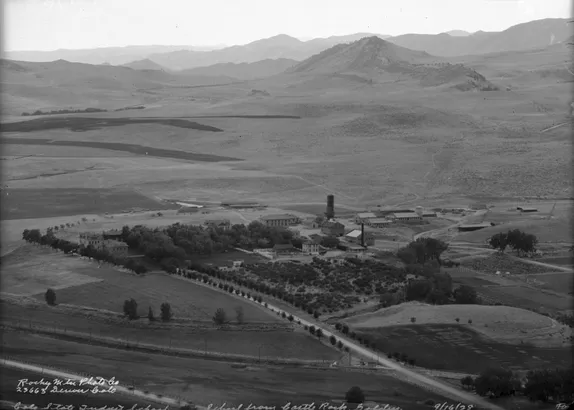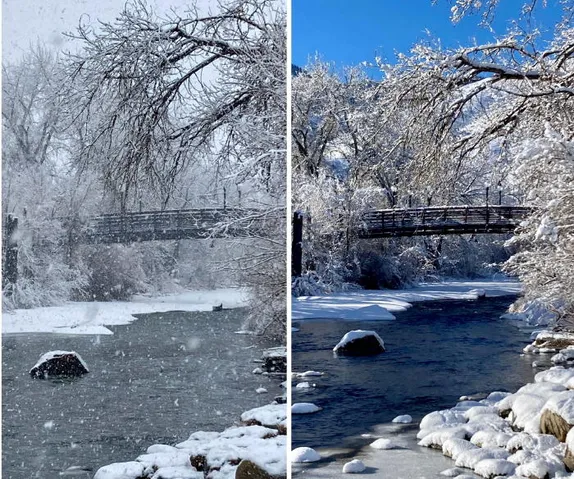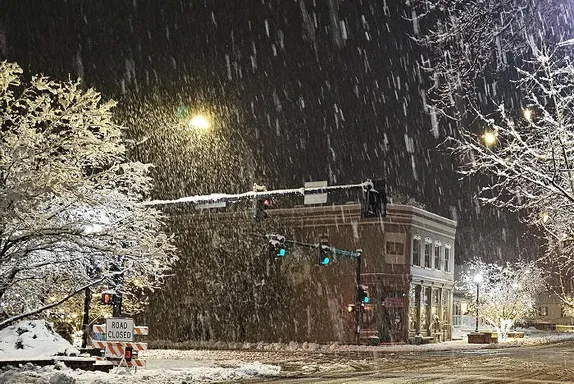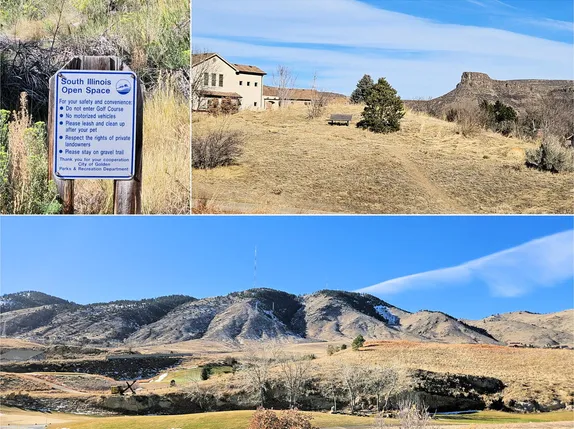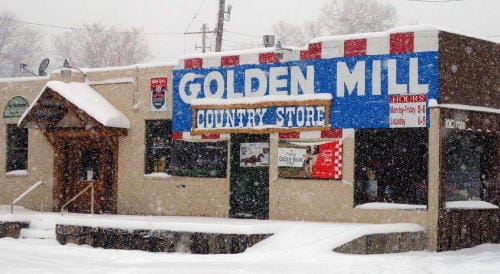
COVID Updates

Appointments to Get the COVID Vaccine (Eligibility)
State of Colorado’s Find Out Where You Can Get Vaccinated page | Lutheran Medical Center | JCPH Clinic in Arvada (70+ only) | www.vaccinespotter.org/CO/
Jefferson County Public Health’s COVID-19 Vaccine Call Center: 303-239-7000 | State Hotline to answer questions, including location of vaccine providers: 1-877-268-2926. It is staffed 24 hours a day
Golden Testing Sites
Mines COVID Testing | Jeffco Fairgrounds COVID Testing
More Public Health References
School of Mines COVID-19 case page. | Sign up for exposure notifications | CDC | Colorado | Jefferson County | City of Golden
Daylight Saving Time
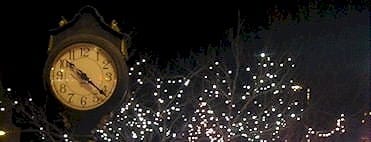
Virtual Events
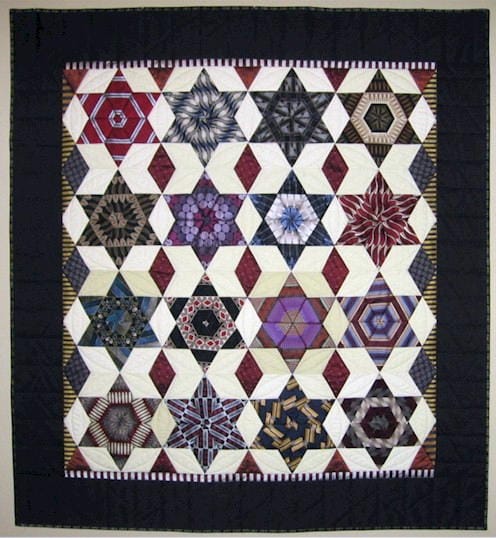
Online Worship:
Calvary Episcopal Church | Faith Lutheran Church | First United Methodist Church | First Presbyterian Church | Flatirons Community Church | Golden Church of Christ | Golden Presbyterian Church | Hillside Community Church | Jefferson Unitarian Church | Rockland Community Church | St. Joseph Catholic Church
2-4PM Virtual Sunday at the Quilt Museum – Christine Copenhaver: Necktie Quilts Reinvented
Real World Events
10AM Wild West Walking Tour
11AM-2PM Brunch at the Rose
Golden History Moment
Greatest Hits Week: To celebrate a full year of writing Golden History Moments, I’m re-running some of my favorite articles. This article about Golden’s City Park originally ran on January 26, 2020.
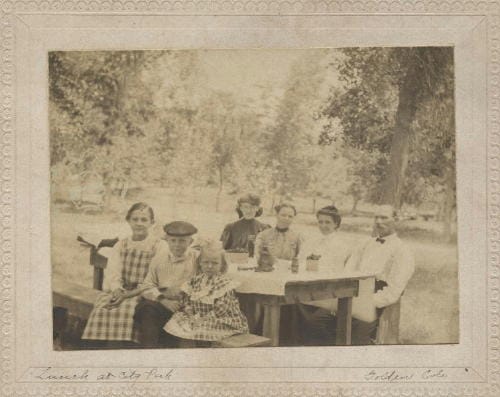
I recently purchased an old photo showing a family in a park. I wouldn’t normally buy such a photo: they’re not my family, and there’s nothing in the picture to show that it was set in Golden; however, the picture was labeled “Lunch at City Park – Golden Colorado.” This long-lost park has always held a certain fascination for me.
The earliest maps of Golden show a four square block area between 16th and 18th Streets, from Arapahoe to Illinois, marked “Public Square.” According to the Colorado Transcript, town father William Loveland donated it to the City with the stipulation that it always be used as a park.
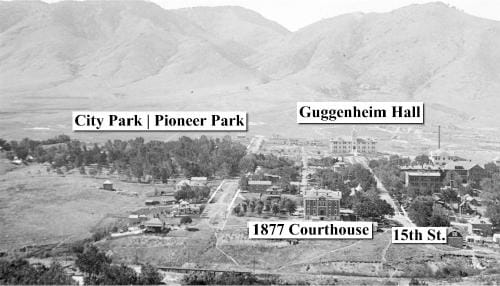
In 1884, the City paid to build a fence around the park, and on Arbor Day, the citizens planted 500 trees. In 1886, the City installed a tap to allow the trees to be irrigated. For several years afterward, citizens continued to plant trees in the park on Arbor Day.
During the Depression, when other forms of recreation became cost-prohibitive, interest in the park grew. In 1932, the Daughters of the American Revolution led a community effort to enhance the park. It had been commonly called “City Park,” but at that time the community decided to rename it “Pioneer Park.” They hired a landscape architect to make a plan for the park. His model was shown in a store window on Washington Avenue. The model included a swimming hole with a diving tower, a duck pond, many flower gardens, a lily pond, picnic tables, a playground, and a bandstand. Lack of funding meant that few of the features were built, but we did add picnic tables, a wading pool, stone restrooms (privies), and a small playground.
The park was used by church groups, Boy Scouts, Oddfellows, labor unions, Camp Fire Girls, and revival meetings. Summer camps for children were held in the park for several years. In 1935, the town experienced a huge rift over the issue of building a softball field in the park. Homeowners on the streets surrounding the park thought that the field, which was to have electric lights, was the first step on a slippery slope that would result in Pioneer park being the new Elitch Gardens (noise! lights! litter! crime!).
The city had very limited funds during the Depression and the park suffered from a perennial lack of maintenance. Various civic groups worked on the park as time and funds were available, but there were many dead trees and the grass was rarely mowed. In 1944, the Transcript wrote that “…equipment and facilities there are frequently abused. Bottles are broken in and around the wading pool. Sand and gravel are poured into the drinking fountain, clogging it up. Lunch scraps and paper are thrown around.”
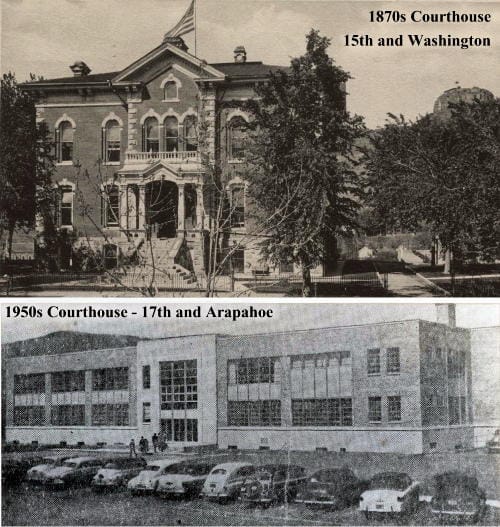
In 1945, Jefferson County decided they needed a new Courthouse. The City of Golden didn’t want them to leave town, so, after a vote of Golden citizens (511 to 102), they offered Pioneer Park to the County for $1, provided they build a new courthouse on that ground by 1955. The new courthouse was to have plenty of parking but be kept in a park-like setting. The County accepted, but found it very difficult to get a clear title on the property, so construction was delayed. In 1947, the School of Mines said that they would also like to build on part on the property. This was not the original agreement, and meant that the park would become much less park-like. In the meantime, the property became more and more run down. Nobody wanted to spend money on maintenance when no one knew who would wind up owning it.
June 17, 1948 Colorado Transcript
NO PLACE TO PLAY
You know, it’s just downright pitiful that Golden has no playground for the children, when you see how they love those poor, dilapidated pieces of equipment that are still standing in Pioneer park.’ There’s seldom an hour during any nice day that there are not a few children and sometimes several playing on the rings, the swings and the slide. They don’t mind that there’s a rung missing on the ladder to the top of the slide. They stretch and strain and manage to get to the top. They don’t mind that one swing is gone entirely, another has broken and been hiked up to an uncomfortable height. They don’t care that two of the rings are gone and the chains have been tied together. They still thoroughly enjoy and love what is left— and they use it continually. And the poor wading pool that some organization struggled to get built once upon a time. Now it is full of sand, waste paper, broken glass, splintered wood, orange peel, twigs, dead leaves and such. Of course it Is never used anymore because it was a health hazard and the dogs practically crowded the children out. But wouldn’t it be wonderful if there were a nice, fenced-in wading pool for the children and a beautiful playground with lots of good, sturdy equipment?
June 16, 1949 Colorado Transcript
GOLDEN’S ORPHAN
SUMMER Is upon us and still nothing has been done to improve the appearance of Golden’s orphan—Pioneer Park. But the children love it just the same. They play ball there, romp through the wild grass, now growing so tall, and enjoy the remains of a once well-kept playground. The children love the swings though there is only about one and a half of the original set left. The slide is missing a rung on the ladder and one rail, but still the boys and girls —and even some dogs—enjoy it. The wading pool is full of rubbish because there is no one with responsibility to take an interest in how it looks. Last summer the city did have the weeds and grass mowed. But since the city deeded the plot to the county as a site for a courthouse, there has been no responsible care taken of this beautiful and valuable plot of land. It is a wonder to us that the two outdoor toilets have not been declared health hazards. Cause of all this neglect lies in a cloudy title —did the city ever have a deed to the property that it could turn over to the county? When the suit to quiet title to this plot is settled, we are promised that things will be better in Pioneer Park. Meantime, the children go on loving it for all its shabbiness, and a few hundred picnickers will enjoy the shade of its beautiful trees this summer—without accommodations.
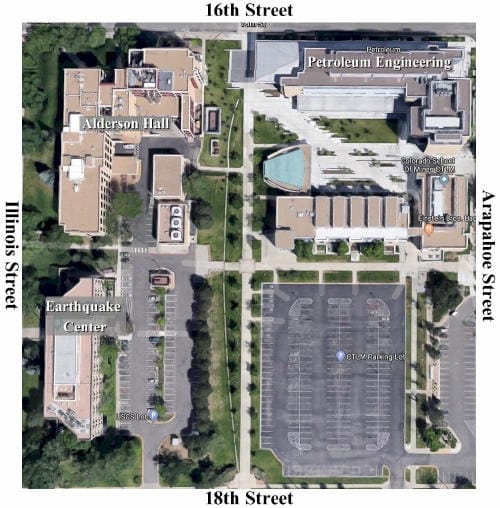
By 1950, Golden had agreed to let both the County and the School of Mines build on the land. The trees were removed and the ground was leveled. The County built a new courthouse and the School built their Petroleum Engineering Building. In 1957 the County added a new jail on the property.
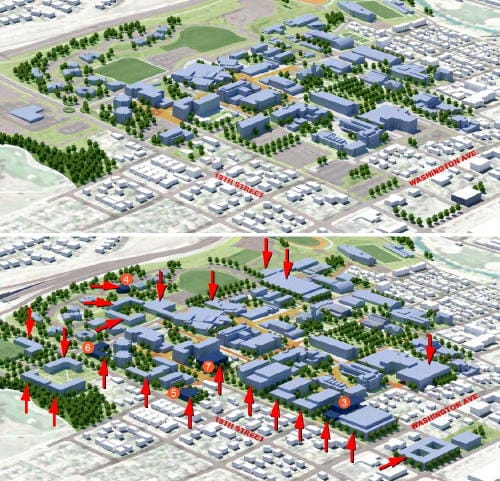
In the mid-1990s, the County built a new courthouse and jail and sold the 1950s buildings to the School. The School has big expansion plans, and we can expect to see new buildings on the old Pioneer Park in the next few years.
It would be nice to have four square blocks of woodland in that location, but it’s not surprising that–after so many years of economic depression followed by a World War–the citizens of Golden were more interested in economic development than in keeping apparently useless and thoroughly unmaintained parkland. Parfet Park had been built in the 1930s and became increasingly favored over time. With its location on lower ground, it was easier to get to.
Many thanks to the Golden History Museum for providing the online cache of historic Transcripts, and to the Golden Transcript for documenting our history since 1866!

